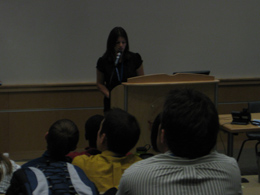May 27 - August 1

Identifiying Critical Strengths and Limitations of Current Radar Systems
Jennifer Newman, Daphne LaDue, and Pam Heinselman
Abstract:
The Next-Generation Weather Radar (NEXRAD) network of Weather Surveillance Radar-1988 Doppler (WSR-88D) radars is nearing the end of its expected 20-year engineering design lifetime. One replacement system currently under consideration is multifunction phased array radar (MPAR). The purpose of this study is to illustrate the critical capabilities of current radar systems to decision-makers and to determine the suitability of MPAR to users’ needs. Interviews were conducted with National Weather Service (NWS) forecasters and broadcast meteorologists to collect stories which exemplify radar strengths and limitations.
The roles served by participants strongly affected their use of radar. NWS forecasters use radar to provide information to a variety of user groups across their forecasting area. During severe weather events, they use volumetric data to monitor storm evolution and make warning decisions, and also to evaluate rapid low-level scans to warn for small-scale signatures. Broadcast meteorologists use radar to anticipate and interpret warnings issued by NWS, make decisions about cutting into regular programming to provide severe weather coverage, and illustrate the current threat to viewers. Broadcast participant use their own radars to obtain rapidly updating low-level reflectivity data so that they can pinpoint the time and location of NWS warnings.
Limitations identified in the study include radar horizon issues, de-aliasing problems, beam spreading, and detection of precipitation type. PAR capabilities will help to mitigate the effects of many of these limitations.